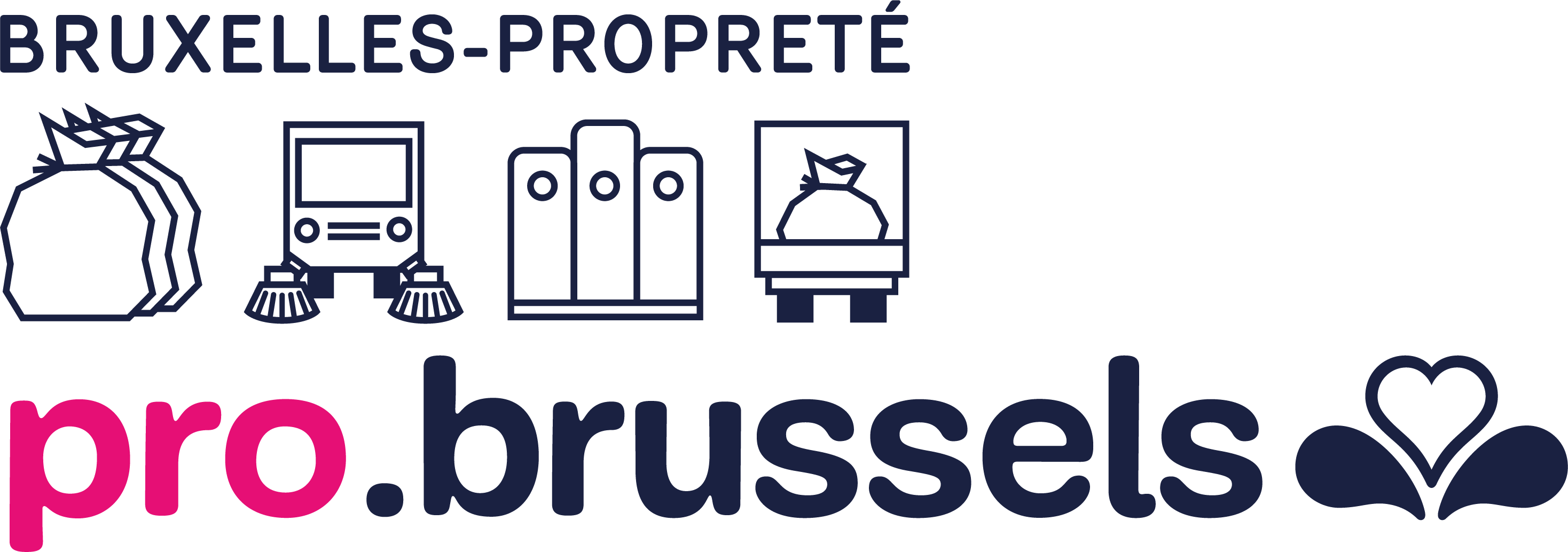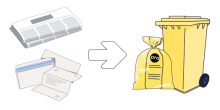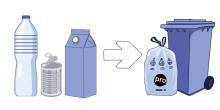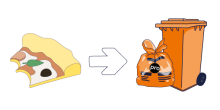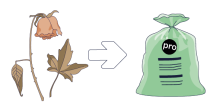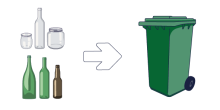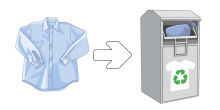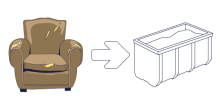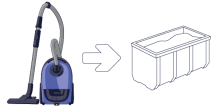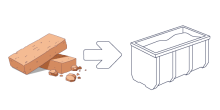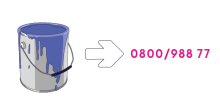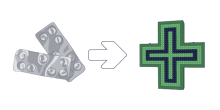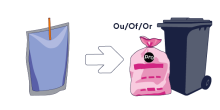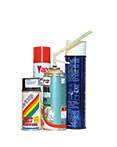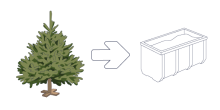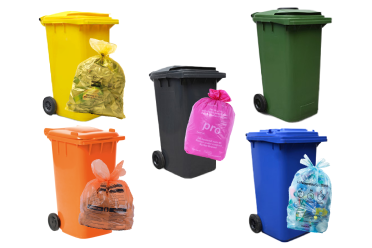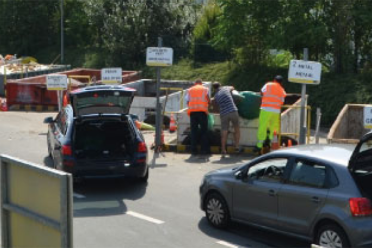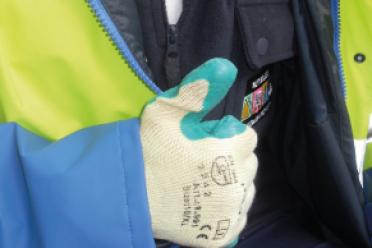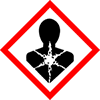
Sorting and recycling your waste
While the 2% of incorrectly sorted waste in paper and cardboard may seem small, it nevertheless represents almost 1,000 tonnes of incorrectly sorted waste per year.
We also encourage you to download our sorting memo and to fix where it can easily be seen.
What?
What waste should be sorted in this category?

Waste authorized in the “Paper-cardboard waste” category:
Paper and cardboard waste originating from the normal running of a business, i.e. waste that is similar in nature and composition to waste originating from households.
- Envelopes, even with windows
- Pure paper / cardboard
- White paper / cardboard
- Colored paper / cardboard
- Paper / cardboard with printed writing
- Letter paper
- Printer / photocopy paper
- Cardboard boxes (washing powder boxes, cereal boxes, …)
- Medication leaflets
- Cardboard tubes or cores (accepted if "Cardboard" only)
- Metal-free cardboard folders / binders
- Cardboard wrapping paper
- Newspapers
- Magazines
- Leaflets
- Advertising
- Brochures
- Books
- Archives
- Files
- Paper bags
- Cardboard packaging
- Office paper
Waste refused in the “Paper and cardboard waste” category:
Tetrapaks
Dirty boxes used to hold eggs, fish, etc. (if there has been direct contact, it is refused)
Burnt paper
Wallpaper
Silicone paper
Dirty, soiled or greasy paper / cardboard
Laminated paper / cardboard
Baking paper
Cellophane paper
Carbon paper
Wax paper
Heat-resistant or thermal paper
Metallized / aluminium paper
Paper / bags with aluminium layer
Bread bags
Cardboard tubes or cores (refused in the "paper and cardboard mix”)
Telephone directories
Wrapping paper with plastic
Plasticised paper / cardboard
Tracing paper
Cardboard with an inner plastic layer
Adhesive masking tape / sticky tape
Folders / binders made of plastic or including metal
Takeaway cardboard coffee cups;
Honeycomb paper
Paper towels
Paper tablecloths, tissues and napkins
Diapers / Nappies
Paper polluted by: oil, paint, paraffin or other chemicals
Hazardous waste
Medical waste
Food waste / food
Radioactive or explosive materials
Any erotic content on paper or DVD
Hard plastics
Plastic films, bags and sacks
Textiles, clothing
Toilet paper
Photos
Where?
Where should you put your waste?
You can dispose of your paper and cardboard waste :

In the yellow commercial / pro bag - Only if you have a yellow commercial contract with our Agency.
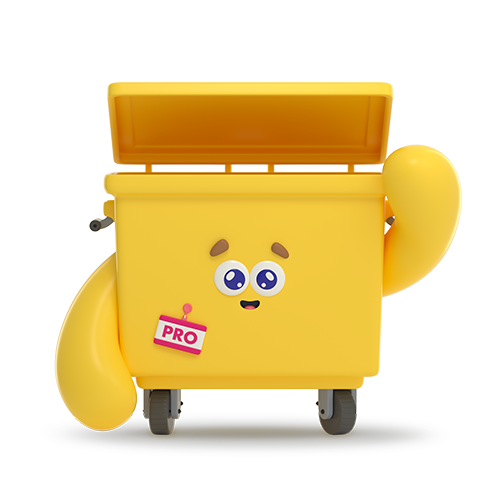
In the yellow container - Only if you have a yellow container contract with our Agency.
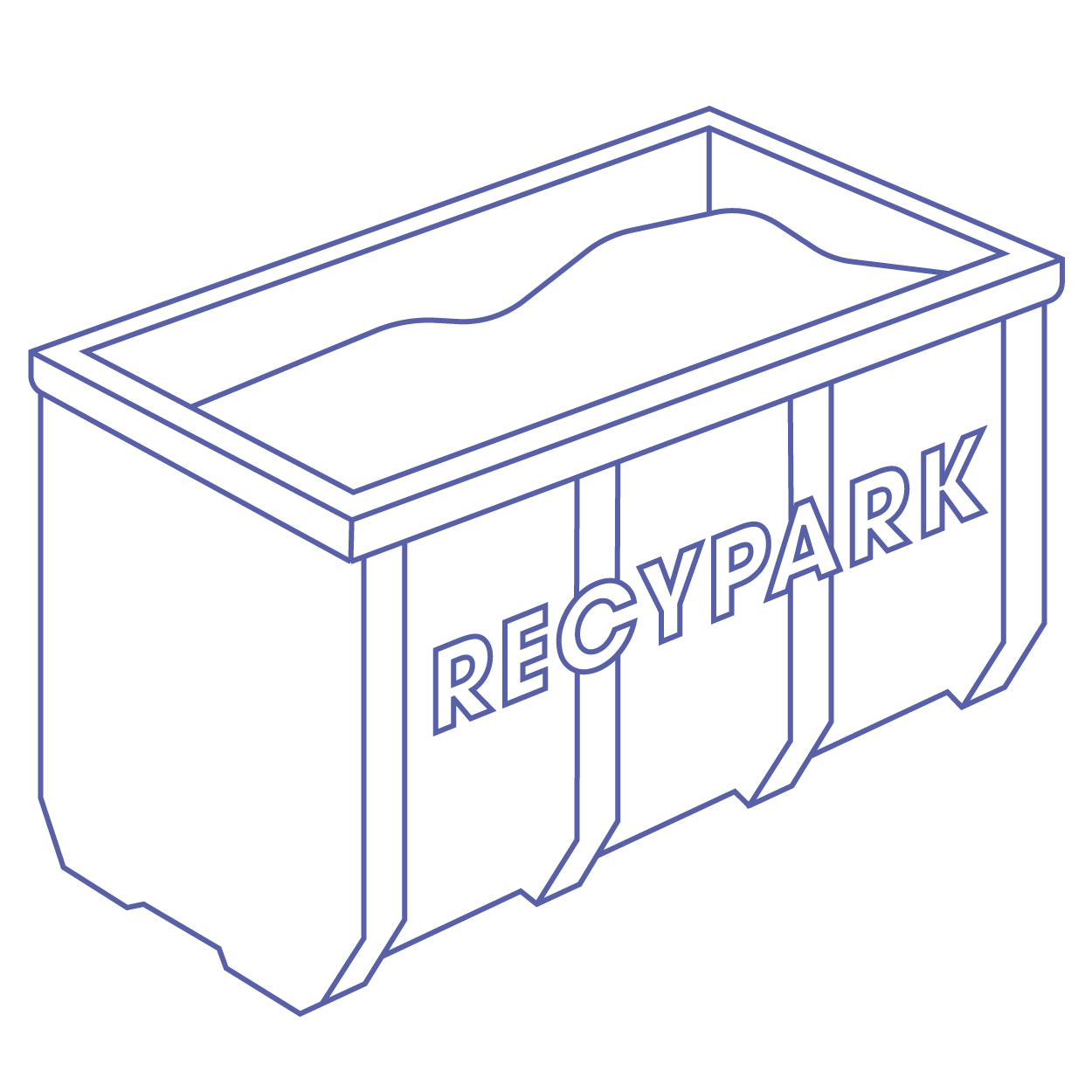
At one of our Recypark for professionals - See rates, rules and practical information on the Recypark page.
How?
How should you present your waste?
Some rules for paper and cardboard waste:
- Paper and cardboard waste must be clean, dry, free of residue, free from plastic film.
- For the collection of paper and cardboard waste in bags, the use of bags other than the yellow commercial / PRO bag provided for this purpose is prohibited.
- Paper and cardboard waste may also be put out for collection in cardboard boxes. Paper and cardboard waste must not spill from the box that is used.
- Pieces of cardboard / newspapers that do not fit in the yellow commercial / PRO bag must be folded and tied securely. It is preferable to use cotton, hemp, jute or sisal string for this. Do not use plastic ties.
- As far as possible, remove stickers, tape or adhesive from cardboard before putting it out for collection.
- For the safety of the teams responsible for collection and for more efficient handling during collection rounds, ensure that the compacted cardboard bales and cardboard boxes are easy to handle and transport, i.e. of a reasonable size and weight. Use two medium-sized bales instead of one that is excessively large or heavy.
- Bag / bales / boxes should be a maximum of fifteen kilograms (15 kg).
- For collection in containers, paper and cardboard waste must be placed loose in the container.
- To be accepted for collection, containers must be easy for our teams to handle. It is important to consider their weight and where to leave them. For example, a container that is too heavy, left on cobbles or gravel, or needs to be lifted off a curb may be impossible to collect, so pay attention to these details when preparing your containers for collection.
We also encourage you to download our sorting memo and to fix where it can easily be seen.
We also encourage you to download our sorting memo and to fix where it can easily be seen.
What?
What waste should be sorted in this category?

Waste authorized in the “PMC packaging” category:
PMD packaging waste originating from the normal running of a business, i.e. waste that is similar in nature and composition to waste originating from households.
Plastic packaging (P)
- Bottles and flasks: soft drinks, water, milk, juice, bath / laundry / dishwashing products, etc.
- Trays and containers: clean or dirty, but emptied of their contents
- Pots, tubes and cups: yoghurt/flower pots, coffee cups, toothpaste tubes, etc.
- Films, bags and sachets: drinks packaging, crisp packets, aluminum bags, industrial films measuring 1 m² maximum, packaging of less than eight liters (8 L), etc.
- Drinks caps: coffee caps, etc.
- Other: 100% plastic hangers.
Metal packaging (M)
- Cans
- Tins
- Aerosol cans (for food products, for cosmetics, etc.)
- Drinks caps (coffee, etc.)
- Metal lids, caps and capsules (for jars, bottles, etc.)
- Metal containers
- Metal drums
- Aluminium plates
- Aluminum containers
- Aluminum trays
- Deodorisers
- 100% metal hangers
- Etc.
Drinks cartons (C)
- Any laminated brick-shaped packaging containing liquid products: fruit juice, soup, milk, cream, etc.
Waste refused in the “PMC packaging” category:
- Non-transparent garbage bags
- Multi-material hangers (plastic hangers + metal hook)
- Hard plastic
- Syringes, intravenous bags (baxter bags) and other healthcare waste
- Packaging with a capacity greater than eight liters (8 L) (cans, etc.)
- Large industrial films, covers/films for pallets and bags of more than 1m²
- Strapping (industrial quantity)
- Objects that are not regarded as packaging or are too large: plastic buckets, water hoses, rubber boots, windcheaters, plastic crates, multi-sockets, coffee machines, plastic overshoes, plastic / nitrile gloves, etc.
- Styrofoam / expanded polystyrene – with small white EPS balls
- Gas cylinders (butane, propane, helium, nitrous oxide, etc.)
- Batteries (lithium,... )
- Electrical and electronic devies
- Packaging with a child safety cap
- Packaging of pesticides, insecticides, herbicides, rat poison, defoamer
- Packaging for oxidising agents, fuels, engine oils and lubricants
- Packaging for glues, paints, lacquers and varnishes, silicone tubes
- Clothing / textiles
- Packaging made from a mixture of materials that cannot be separated (a layer of plastic film with a layer of aluminium film, kraft packaging with a waterproof plastic membrane, etc.), such as pouches for drinks, compote or wet pet food, crisp tubes, etc.
- Packaging with at least one of the hazard pictograms (acute toxicity, health hazard, risk of infection, corrosive products, etc.) shown below:

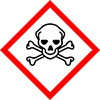
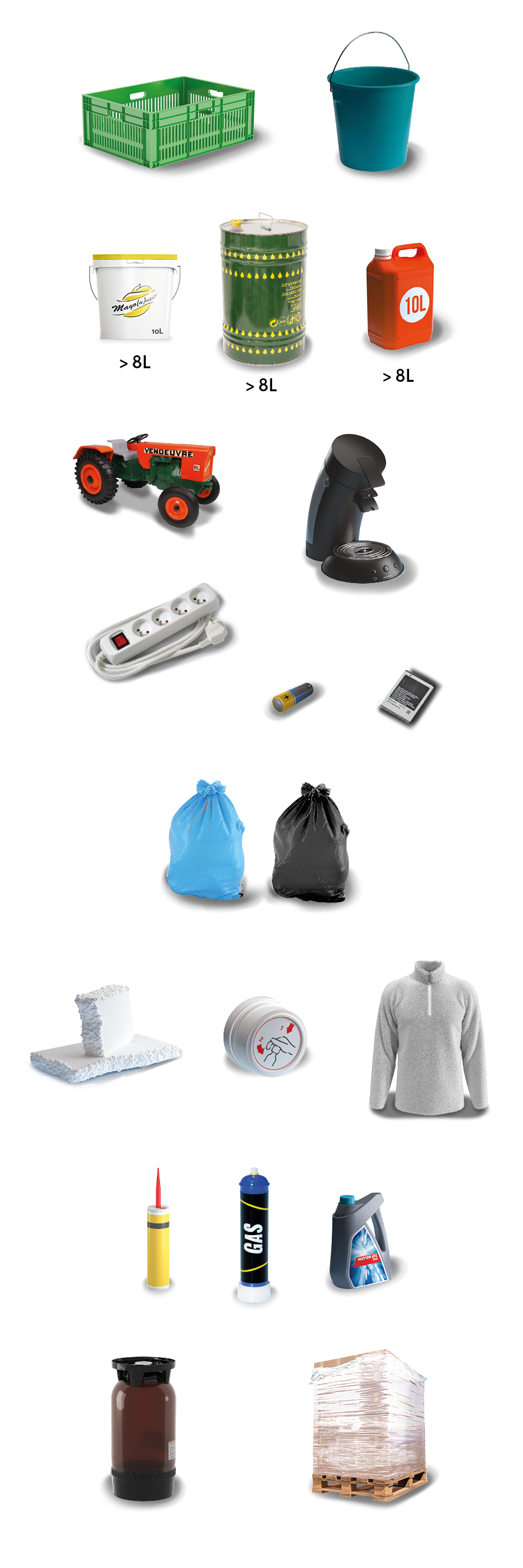
Where?
Where should you put your waste?
You can dispose of your PMD packaging :

In the blue commercial / pro bag - Only if you have a blue bag commercial contract with our Agency.
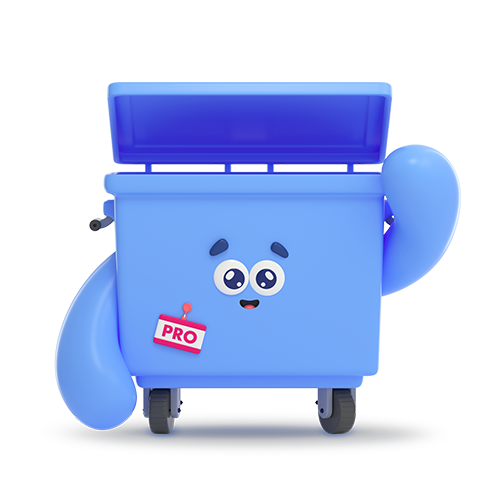
In the blue container - Only if you have a blue container commercial contract with our Agency.
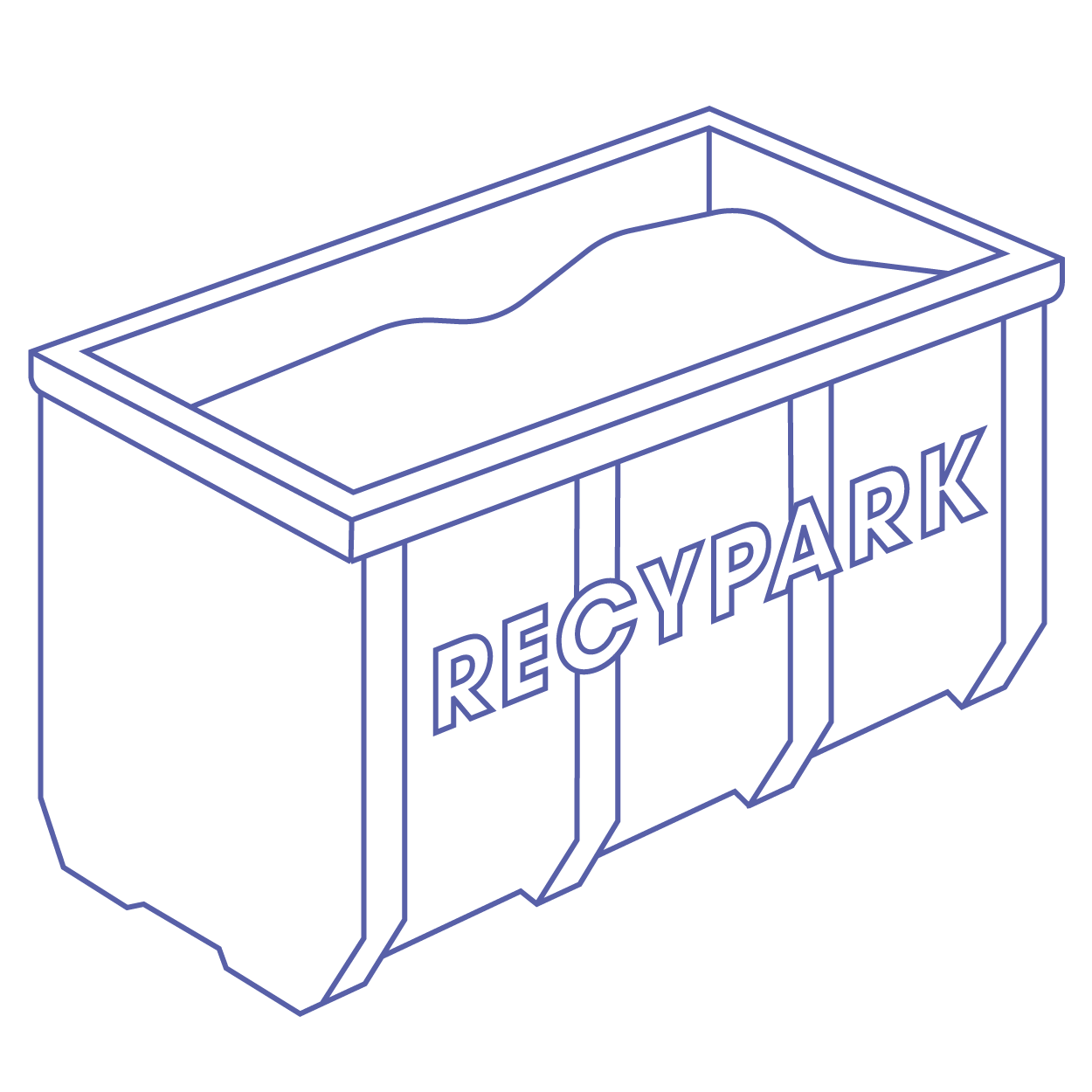
At one of our Recypark for professionals - See rates, rules and practical information on the Recypark page of our website.
How?
How should you present your waste?
Some rules for PMD packaging:
- PMC packaging must be well emptied, drained or scraped of its contents.
- For the collection of PMD packaging in bags, the use of bags other than the blue commercial / PRO bag provided for this purpose is prohibited.
- Please remove plastic films that cover the whole of bottles, trays or containers and dispose of them separately in the blue commercial / PRO bag.
- Flatten the plastic bottles to reduce their width (not their height) and replace the cap.
- Do not nest packaging items inside one another and do not pre-pack your PMD packaging waste in tied bags.
- Don’t attach anything to the outside of the blue commercial / PRO bag.
- PMD packaging must have a maximum volume of eight litres (8 l).
- Bags should be a maximum of fifteen kilograms (15 kg).
- For container collection, PMC waste can be deposited in bulk or in bags in the container. If you use bags, these must be our Agency's commercial/professional blue bags or transparent bags, otherwise they will be considered non-compliant.
- To be accepted for collection, containers must be easy for our teams to handle. It is important to consider their weight and where to leave them. A container that is too heavy, left on cobbles or gravel, or needs to be lifted off a curb may be impossible to collect, so pay attention to these details when preparing your containers for collection.
Other
Further information
In the wake of the European “Single Use Plastics” (SUP) directive on single-use packaging, the Brussels-Capital Region and Brussels Environment have decided to go one step further in packaging prevention, notably by launching the new “Packaging Facilitator” service to help all public and professional bodies set up sustainable packaging systems, free of charge. For further information, please consult our article on this subject or the Bruxelles Environnement website.
We also encourage you to download our sorting memo and to fix where it can easily be seen.
Food waste represents about 40% of your white bag. Sorting them allows for green energy recovery and production of compost.
We also encourage you to download our sorting memo and to fix where it can easily be seen.
What?
What waste should be sorted in this category?

Waste authorized in the “Food or kitchen waste” category:
Food or kitchen waste originating from the normal running of a business, i.e. waste that is similar in nature and composition to waste originating from households.
- Meal leftovers / leftovers on plates (including leftover meat and fish)
- Leftover bread dough from bakeries in any quantity
- Fruit and vegetable peel
- Confectionery without its packaging
- Coffee grounds
- Tea bags made of paper only
- Paper towels used to clear up food leftovers only
- Paper tissues and napkins (unless you have caught COVID-19, throw them away after use in the fuchsia commercial / PRO bag or the black container for residual waste)
- Expired foods (without their packaging).
Waste refused in the “Food or kitchen waste” category:
- Non-food waste, even if biodegradable
- Compostable / biodegradable packaging
- Green / garden waste
- Inert waste (soil, stone, glass, etc.)
- Toxic waste
- Liquid food waste such as soup, oil (see “Oils”), dairy products, etc.
- Waste of animal or non-animal origin that is rejected for public health reasons (cat 1, cat 2, FASFC-rejected)
- Soap and cleaning product residue
- Food supplements
- Medications
- Flour
- Diapers / nappies
- Wood ash
- Shells: eggs, nuts, oysters, mussels, etc.
- Litter, even biodegradable
- Bones, carcasses and fish bones
- Fruit stones
Where?
Where should you put your waste?
You can dispose of your food or kitchen waste :
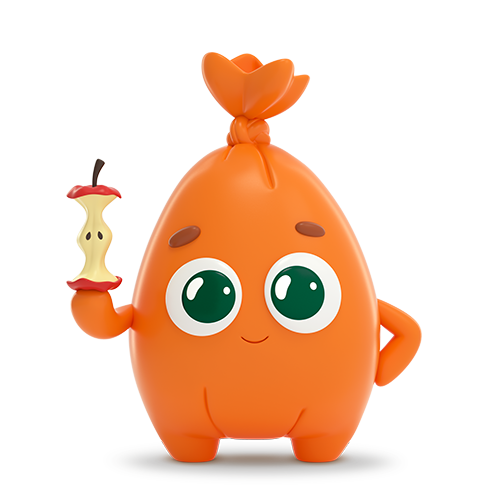
In the commercial / pro orange bag - Only if you have an orange bag commercial contract with our Agency.
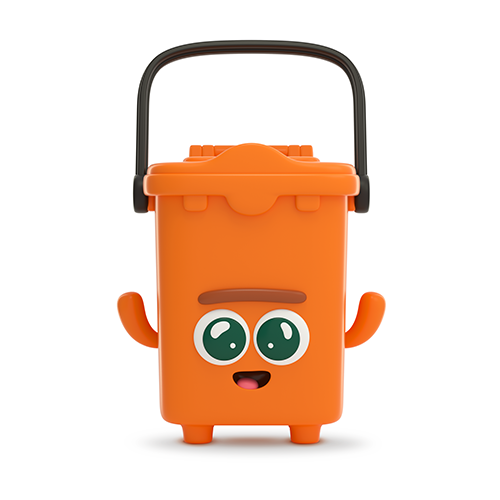
In the small orange bin - Optional for commercial clients. Usually a container will better suit your needs.
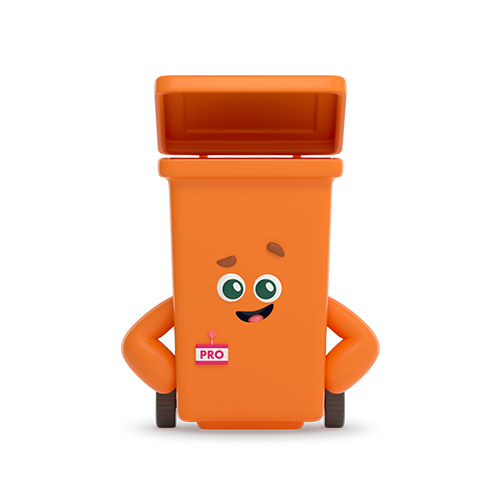
In the orange container - Only if you have an orange container commercial contract with our Agency.
How?
How should you present your waste?
Some rules for food and kitchen waste:
- Food or kitchen waste is refused in Recypark → See "Waste refused to professionnals in our Recypark".
- For the collection of food or kitchen waste in bags, the use of bags other than the orange commercial / PRO bag provided for this purpose is prohibited.
- The small twenty-five litre (25 l) orange bin: you must use the orange commercial / PRO bag sold exclusively by us. The bag must always be tied securely in the small orange bin. Our collection teams will take your bag away and leave your bin on the pavement so that you can reuse it for the next collection.
- The large one hundred and forty litre (140 l) and two hundred and forty litre (240 l) containers: you can put your food waste loose in the orange container provided to you on the basis of your collection contract with us. However, for reasons of hygiene and cleanliness, we recommend that you put your food waste in a rubbish bag before it goes into the orange container. The bag must either be one of our orange commercial / PRO bags or a colourless transparent bag: if not, it will be considered non-compliant for the collection of food or kitchen waste.
- Bags should be a maximum of fifteen kilograms (15 kg).
- To be accepted for collection, containers must be easy for our teams to handle. It is important to consider their weight and where to leave them. For example, a container that is too heavy, left on cobbles or gravel, or needs to be lifted off a curb may be impossible to collect, so pay attention to these details when preparing your containers for collection.
Other
Further information
Do you produce food waste and would like to recycle it better and reduce your collection costs at the same time? The Brussels Environment Professional Biowaste Facilitator is there to provide expert advice and answer your questions. The facilitator offers a free service to professionals to optimise the management of their biowaste, as sorting has been compulsory in the Brussels-Capital Region since 1 May 2023. For more information, read our article on this subject or visit the Brussels Environment website.
Alternatives exist to recycle your food waste: Please visit our website- dedicated to this purpose.
We also encourage you to download our sorting memo and to fix where it can easily be seen.
Since Monday, June 8, 2020, Bruxelles-Propreté teams will only collect the regulatory biodegradable green bags.
We also encourage you to download our sorting memo and to fix where it can easily be seen.
What?
What waste should be sorted in this category?

Waste authorized in the “Green or garden waste” category:
Biodegradable garden waste, i.e. plant waste originating from the normal maintenance of gardens and terraces by a business, i.e. waste that is similar in nature and composition to waste originating from households.
- Branches (maximum diameter 8 cm and maximum length 1.5 m)
- Dead leaves
- Wilted flowers
- Weeds
- Plants
- Florist waste (diseased flowers/plants with pesticides/parasites);
- Hedge trimmings
- Shrub trimmings
- Grass cuttings (accepted for collection)
- Wood chips
- Bark
- Tree stumps / logs / trunks (maximum diameter 30 cm and maximum length 2 m) → only in Recypark
Waste refused in the “Green or garden waste” category:
Grass cuttings (refused at Recypark)
Soil
Sand
Animal faeces
Pebbles
Gravel and chippings
Bricks and brick fragments
Slabs
Scrap metal
Paper → See “paper and cardboard waste”
Branches (more than 8 cm in diameter or 1.5 m in length)
Tarpaulins, wire mesh, fence posts, cement or plastic edging
Tree stumps / logs / trunks (more than 30 cm in diameter or 2 m in length)
Where?
Where should you put your waste?
You can dispose of your green or garden waste:

In the green commercial / pro bag - Only if you have a green bag commercial contract with our Agency.
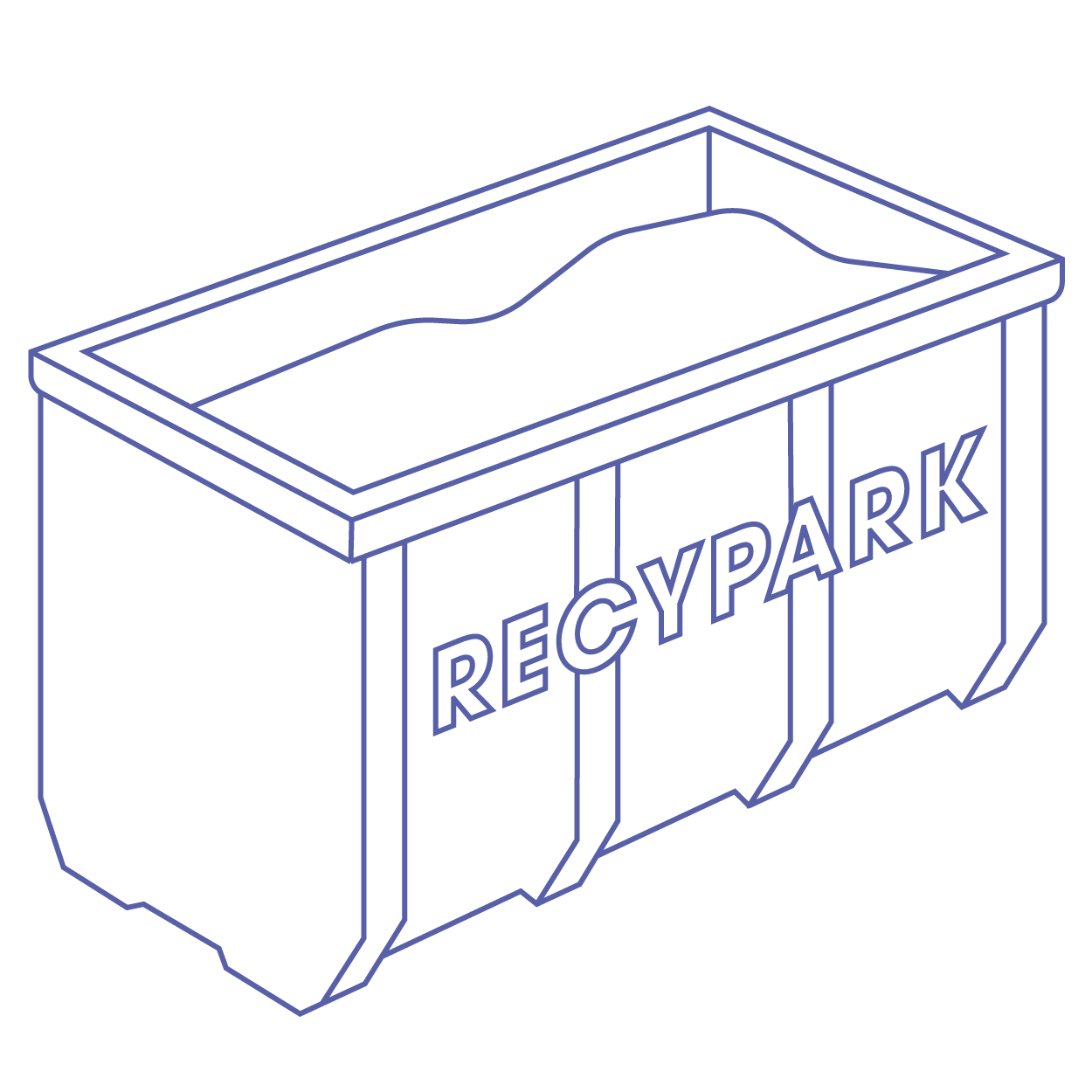
At one of our Recypark for professionals - See rates, rules and practical information on the website's Recypark page.
How?
How should you present your waste?
Some rules for green or garden waste:
- For green or garden waste and garden wood, see “Sorted waste subject to charge for professionals”.
- Waste such as "Grass cuttings" is refused in Recypark → See "Waste not accepted from professionals".
- For the collection of green or garden waste in bags, the use of bags other than the green commercial / PRO bag provided for this purpose is prohibited.
- Branches with a maximum diameter 8 cm and a maximum length of 1.5 m can be presented for collection in the bundles tied together with a biodegradable tie to make them easy to pick up.
- Tied bundles must be made easy to handle: the maximum bag and bundle weight is fifteen kilograms (15 kg).
We also encourage you to download our sorting memo and to fix where it can easily be seen.
Clear glass bottles, jars and flasks must be distinguished from other types of glass.
We also encourage you to download our sorting memo and to fix where it can easily be seen.
What?
What waste should be sorted in this category?

There are three types of glass. It is important to distinguish them, because they are not all recyclable:
- Hollow glass: glass bottles and jars, either whole or in fragments. The glass may be transparent or coloured. Hollow glass is almost endlessly recyclable without loss of quality.
- Flat glass: as its name suggests, this type of glass is flat. It may or may not be recyclable.
- Hazardous glass: includes all categories of glass that have been in contact with chemicals or toxic products, laboratory products or medicines. This glass must be stored separately.
Waste authorised in the "Glass waste" category:
Transparent or non-transparent glass waste, whether colourless or coloured, originating from the normal running of a business, i.e. waste that is similar in nature and composition to waste originating from households.
- Hollow food glass and jars without food remains, provided any gravure printing does not contain colour.
- Authorised glass packaging waste that has been broken (bottles, jars, flasks, etc.) can be included as long as it represents a minority of the glass waste.
Waste refused in the ‘Glass waste’ category:
- Tubes
- Needles
- Borosilicate glass
- Laboratory glass and medical packaging
- Glass stoppers and packaging items
- Lamps (light fixtures, bulbs, neon lights and tubes)
- Drinking glasses and glassware (their chemical composition is not the same)
- Glass containing lead
- Vitroceramic glass (stove glass, Pyrex, glazing from wood burners, ovens, microwaves or hob) → See "Bulky professional waste"
- Pottery, porcelain, ceramics, terracotta (plates, cups, etc.)
- Bottles that have contained chemicals;
- Bottles from hospitals and similar waste still containing liquids
- Plastic lids, caps, capsules, tubes → See "PMD waste"
- Deliberately crushed glass (prohibited due to weight, high density)
- Flat glass (mirrors, panes, laminated glass (windscreens), etc.) → See "Flat glass"
- Glass resistant to high temperatures (oven dishes, etc.)
- Opaline and crystal (opaline bottle, wine glasses, etc.)
Where?
Where should you put your waste?
You can dispose of your transparent coloured or non-coloured glass waste:
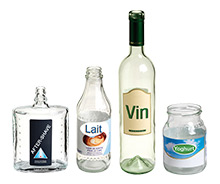
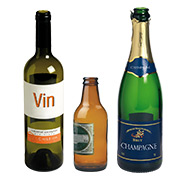
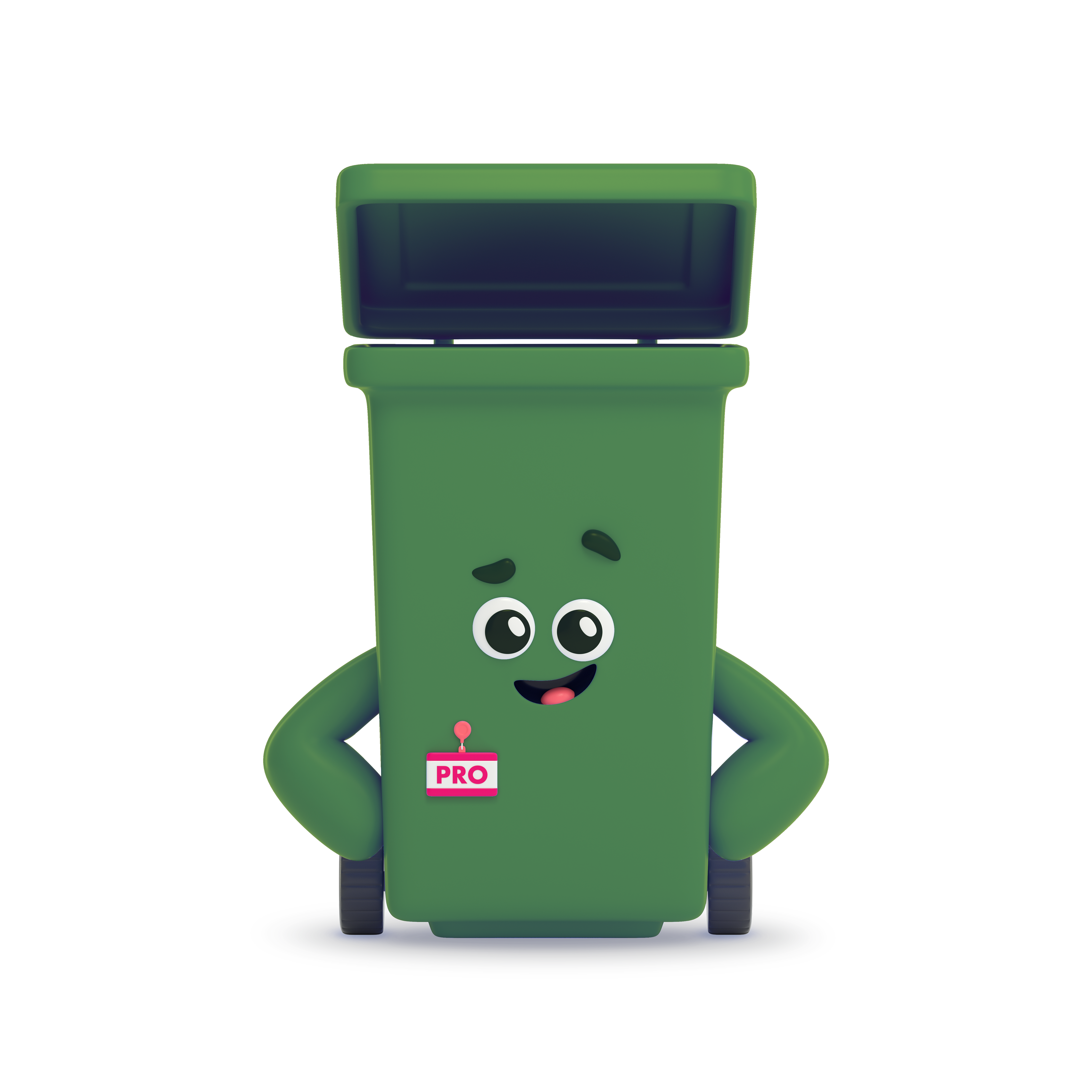
In the green container - Only if you have a green container commercial contract with us.
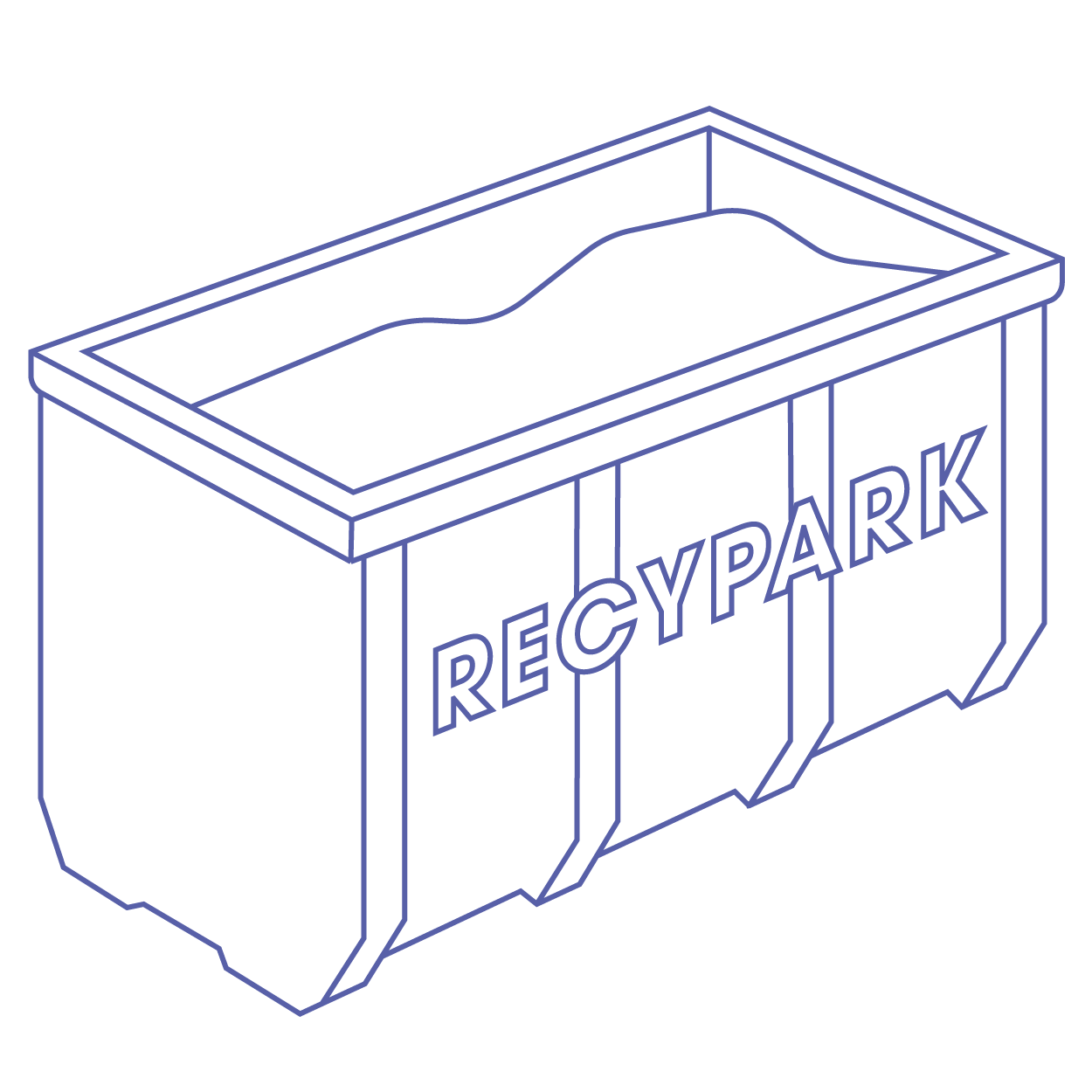
At one of our special Recyparks for professionals - See rates, rules and practical information in this document or on the website’s Recypark page.
You can dispose of your non-transparent coloured or non-coloured glass waste, as well as your broken glass waste:
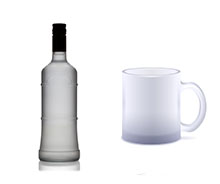
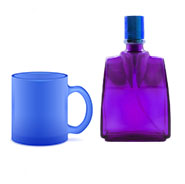
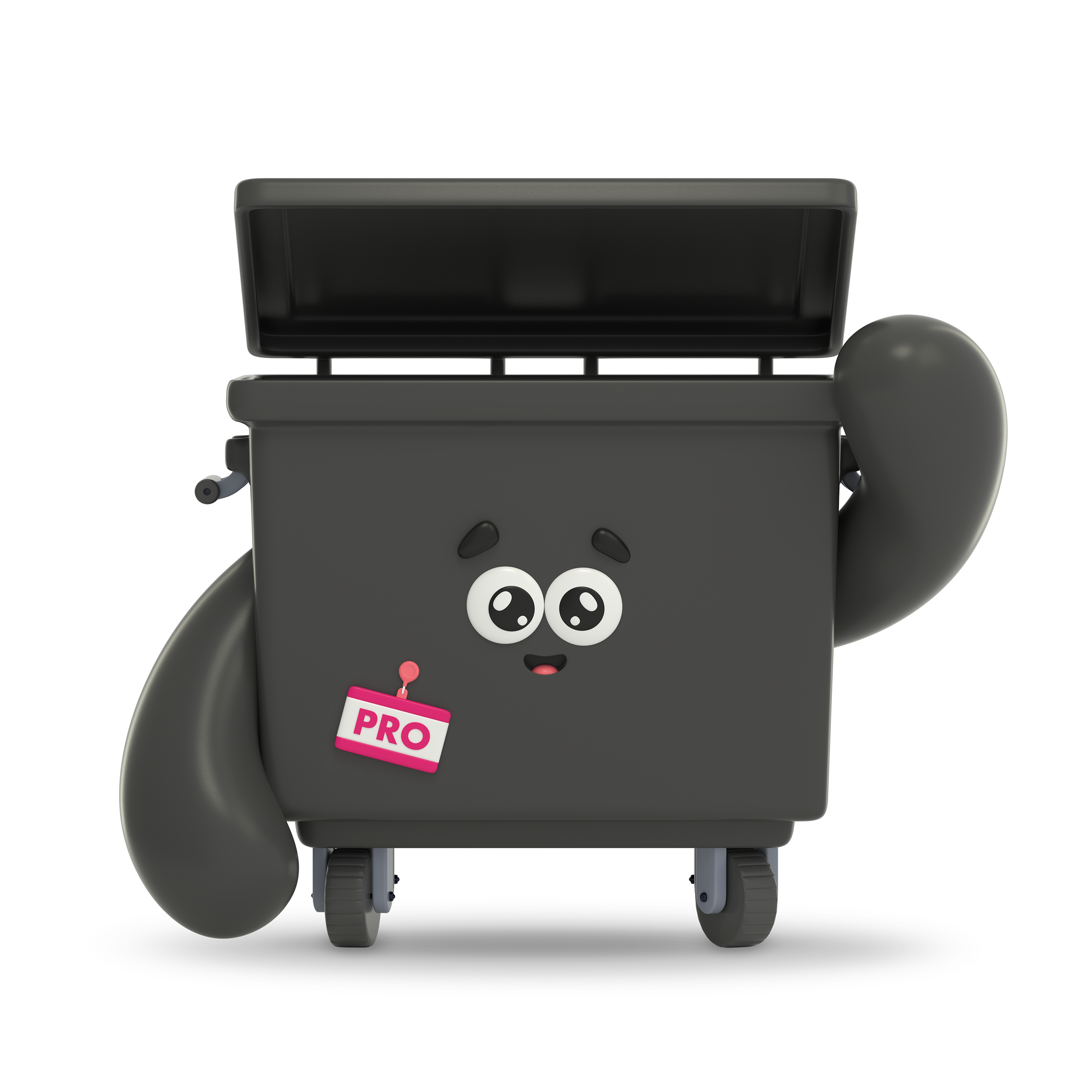
For small items only: in the fuchsia commercial / PRO bag or the black container - Examples of small broken glass waste: drinking glasses, small mirrors, bottles, jars, flasks, etc.
Only incandescent (ordinary) and halogen bulbs may be put in the fuchsia commercial / PRO bag or the black container.

For small and large items: at one of our Recyparks for professionals and/or via our professional waste removal service (on a quotation basis) -Examples of large broken glass waste: large mirrors, panes, etc.
Energy-saving bulbs and LED lamps may be taken to a Recypark or collected by our professional waste removal service.
Fluorescent tubes (neon lights) are only accepted via our professional waste removal service (contact us at pro@arp-gan.be).
How?
How should you present your waste?
Some rules for glass waste:
- Glass waste from professionals must not go into the bottle banks glass recycling containers, which are for citizens without a collection contract.
- Glass waste must have lids, tops or caps removed and be emptied of its contents.
- Please carefully wrap any sharp objects or packages to prevent injury to our personnel.
- To be accepted for collection, containers must be easy for our teams to handle. It is important to consider their weight and where to leave them. For example, a container that is too heavy, left on cobbles or gravel, or needs to be lifted off a curb may be impossible to collect, so pay attention to these details when preparing your containers for collection.
- Glass waste must be presented in bulk as follows in large containers: white glass, coloured glass, mixed glass.
- Transparent glass bottles from hospitals and similar waste emptied of its contents can only be accepted for "Glass waste" collection if it has not contained hazardous or potentially hazardous products.
We also encourage you to download our sorting memo and to fix where it can easily be seen.
From January 2025, used textiles from professionals will also be subject to the sorting obligation. The Brussels Region aims to reach 65% of collected textile waste within 2-3 years of the obligation coming into force. The Region is also aiming to achieve 5 kg/inhabitant/year of preparation for reuse by the end of 2025, and 65% of waste prepared for reuse and recycled by 2035.
We also encourage you to download our sorting memo and to fix where it can easily be seen.
What?
What waste should be sorted in this category?
Waste authorized in the “Textiles” category:
Includes all professional textile equipment, such as :
- Work clothing (uniforms, aprons, protective equipment) - including clothes with holes in them, provided they are clean and dry
- Flat linen (sheets, towels, tablecloths, napkins, etc.)
- Scrap fabrics
- Etc.
Waste refused in the “Textiles” category:
Wet textiles → residual waste
Contaminated textiles (fleas, etc.) → residual waste
Soiled textiles → residual waste
Where?
Where should you put your waste?
You can dispose of your textiles waste :
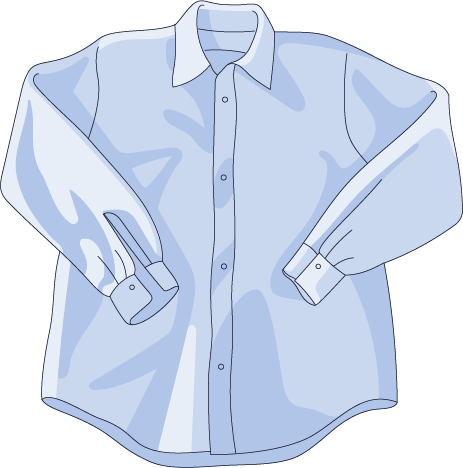
Some upcycling artisans:
- These artisans offer their services to professionals and can propose tailor-made solutions.
- If your textiles are still in good condition, you can call on social economy enterprises for tailor-made solutions focusing on reuse.
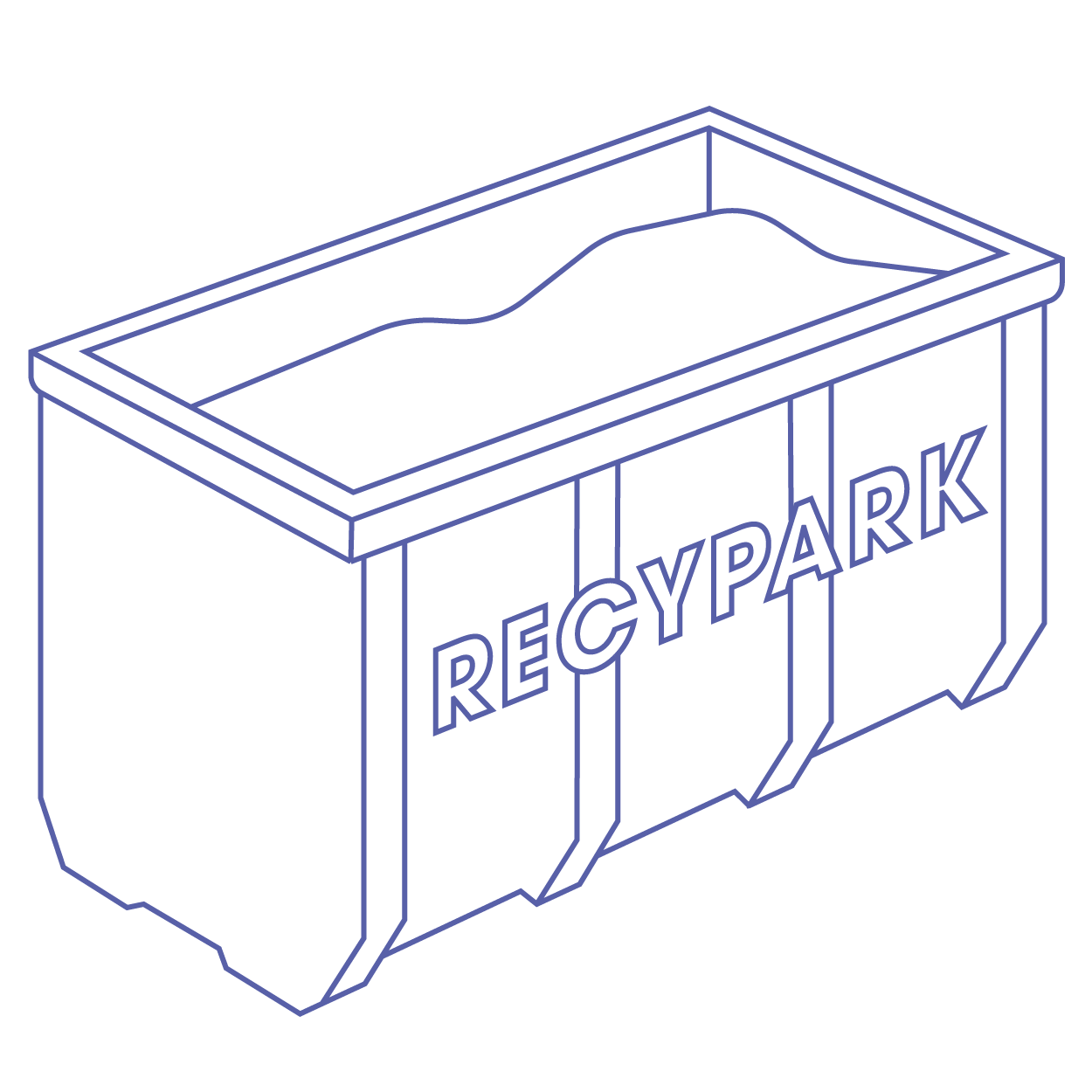
In the textile bubbles in one of our Recyparks accessible to professionals (only in small quantities):
Textiles must be packed in 60l max. bags.
See rates, rules and practical information on the page Recypark.
How?
How should you present your waste?
Some rules for textiles waste:
- Textiles must not be wet, contaminated (fleas, etc.) or soiled → residual waste
- Textiles must be packed in 60l max. bags.
- For further information, please consult Bruxelles Environnement website and their specific information sheet on the management of professional textiles.
We also encourage you to download our sorting memo and to fix where it can easily be seen.
Before getting rid of your household bulky items, first assess their condition! If they're in good condition, pass them on to friends and family, or to social economy associations.
We also encourage you to download our sorting memo and to fix where it can easily be seen.
What?
What waste should be sorted in this category?
Waste authorized in the ‘Bulky professional waste’ category:
Bulky professional waste is waste from your professional activity that cannot be collected in bags due to its nature, weight or size. See ‘Sorted waste for which payment is required’.
- Furniture and decorative furnishings (tables, armchairs, carpets, etc.)
- Vitroceramic glass (stove glass, Pyrex, glazing from wood burners, ovens, microwaves or hob)
- Rotten wood (not recycled but intended for thermal recovery)
- Plastic frames
- Plastic shutters
- Rimless bicycle tires
- Cellular concrete
Waste refused in the ‘Bulky professional waste’ category:
However, there are three types of waste that require specific treatment:
- Chemical products.
- Large electrical and electronic appliances (refrigerated counters, large photocopiers, vending machines, coffee machines).
- Inert waste (rubble, bricks, stones, breeze-blocks.....).
- Chemical waste
- Inert waste
- Empty paint cans
- Badly worn-out mattresses
- Mattresses in pieces
- Burnt mattresses
- Mattresses whose materials cannot be recycled (straw, animal hair, etc.)
- Mattresses whose mechanical strength is seriously compromised
- Damp / visibly wet mattresses
- Mattresses that may present risks for the personnel responsible for handling them (pointed or sharp parts, etc.)
- Mattresses with large areas of deep wetness or presenting very clear signs of fungal proliferation
- Mattresses that are excessively soiled, degraded or damaged or with large areas in an advanced state of deterioration
- Bicycle tyres with rim → See "Metal"
Where?
Where should you put your waste?
You can dispose of your bulky professional waste:

Via our professional waste removal service.
- On a quotation basis: contact us at pro@arp-gan.be.
- For bulky professional waste only: phone us on 0800/981 81 to make arrangements.
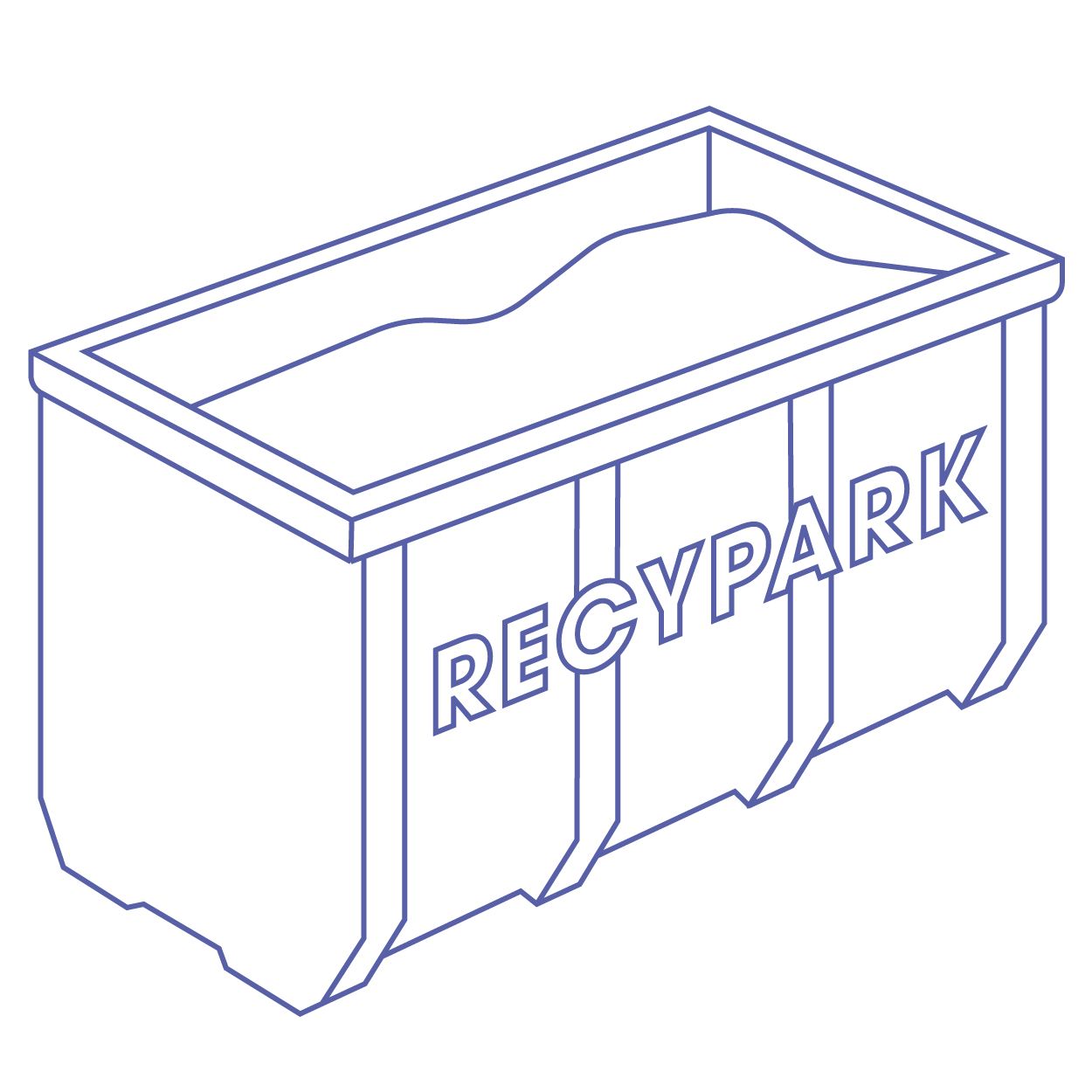
At one of our Recypark for professionals - See rates, rules and practical information on the Recypark page of our website.
How?
How should you present your waste?
Some rules for bulky professional waste:
- Bulky items are sorted by category.
- For frames and shutters, see ‘Sorted waste for which payment is required’.
We also encourage you to download our sorting memo and to fix where it can easily be seen.
Your electrical or electronic appliances contain harmful substances that can have a negative impact on the environment. There are a number of recycling channels for treating these harmful substances and recycling the recovered material.
We also encourage you to download our sorting memo and to fix where it can easily be seen.
What?
What waste should be sorted in this category?
Waste authorized in the “Professional electrical and electronic waste” category:
- Large household appliances: refrigerated counters, large photocopiers, vending machines, large coffee machines, washing machines, dryers, dishwashers, hoods, ovens, stoves, refrigerators, freezers, etc.
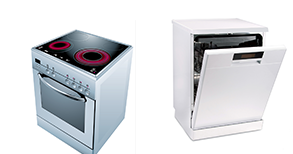
- Small household appliances: vacuum cleaners, toasters, small coffee machines, hair dryers, waffle irons, mixers, microwave ovens, fryers, kettles, irons, electric garden or DIY tools, etc.
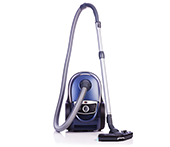
- Multimedia devices: computers, touchscreen tablets, computer screens, television screens, radios, hi-fi systems, mobile phones, MP3 players, cameras, video recorders, alarm clocks, etc.
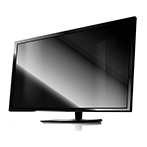
- Bulbs separated by type: compact fluorescent bulbs (‘economy bulbs’), fluorescent tubes (‘economy tubes’), LED lamps and incandescent bulb (‘ordinary bulbs’), etc.
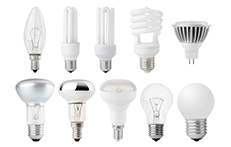
- Lighting: floor lamps, desk lamps, chandeliers, lanterns, etc.
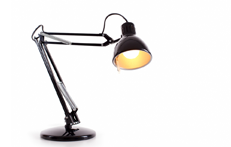
Waste refused in the “Professional electrical and electronic waste” category:
- Plastic film → See “PMD waste”.
Where?
Where should you put your waste?
You can dispose of your “Professional electrical and electronic waste”:

Via our professional waste removal service.
- On a quotation basis: contact us at pro@arp-gan.be.
- For bulky professional waste only: phone us on 0800/981 81 to make arrangements.
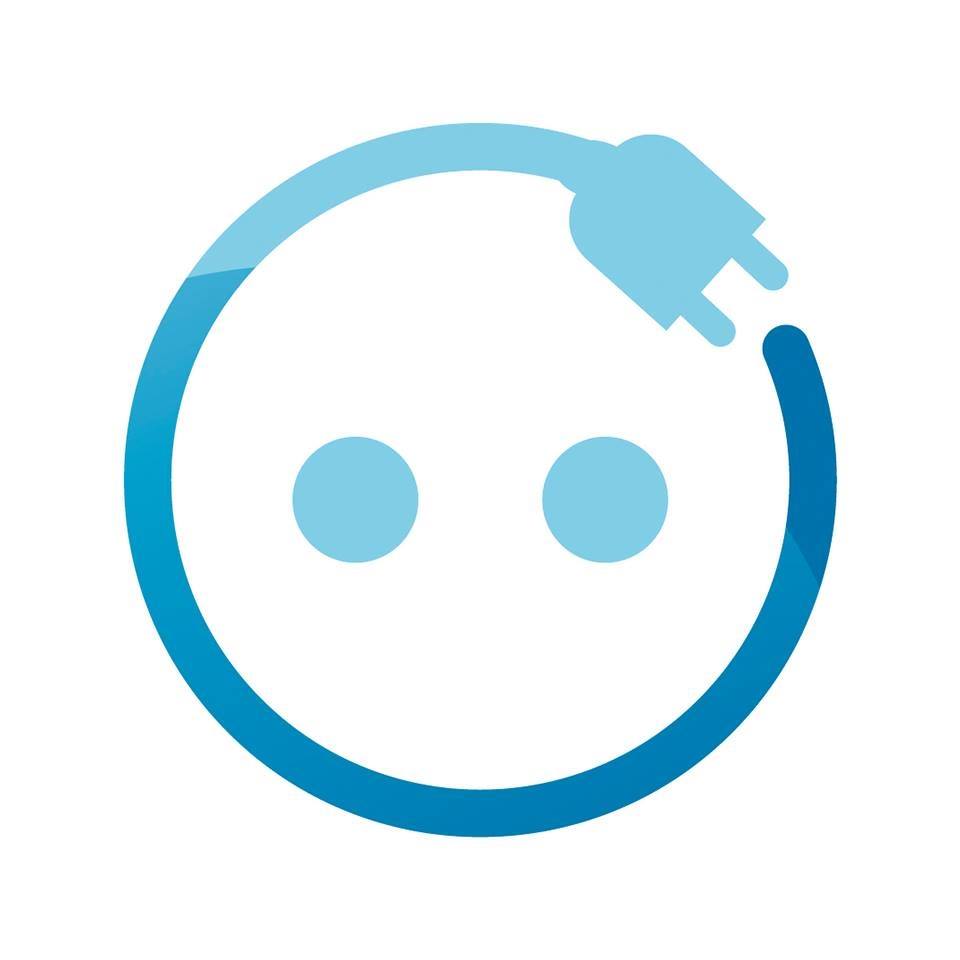
- Contact Recupel directly.
How?
How should you present your waste?
Some rules for “Professional electrical and electronic waste”:
- Professional electrical appliances are refused at Recypark → See “Waste not accepted from professionals”.
- Appliances must not contain batteries or bulbs.
- Fridges and freezers must be empty.
- Fryers must be free of fat or oil.
We also encourage you to download our sorting memo and to fix where it can easily be seen.
Construction and renovation waste represents a growing volume and tonnage.
We also encourage you to download our sorting memo and to fix where it can easily be seen.
What?
What waste should be sorted in this category?
Any item physically attached to your business or commercial premises is, generally speaking, considered to be construction, renovation or demolition waste. However, two categories of waste should be distinguished:
Waste authorized in the “Inert construction, renovation and demolition waste” category:
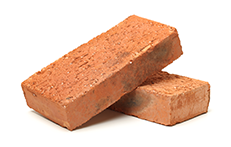
- Rubble
- Bricks
- Brick fragments
- Pebbles
- Stones
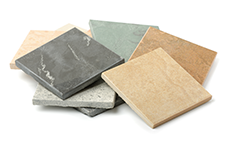
- Floor tiles
- Slabs
- Roof tiles
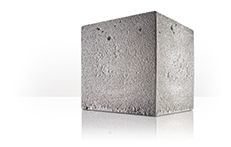
- Concrete
- Bond stone
- Cement
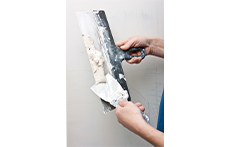
- Plaster (scraps, Gyproc type boards and ceilings)
Waste authorized in the “Other construction, renovation and demolition waste” category:
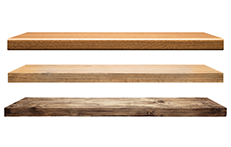
- Treated and untreated wood
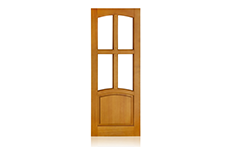
- Wooden, metal or plastic doors, frames and shutters
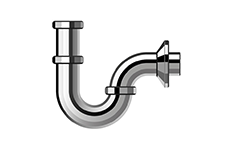
- Gutters and pipes
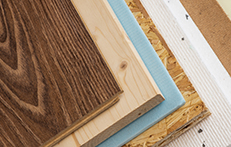
- Floor coverings
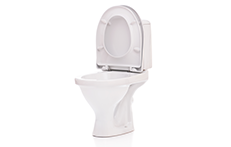
- Bathroom fixtures
Waste refused in the “Construction, renovation and demolition waste” category:
- Roof covering materials (roofing felt / Derbigum)
- Asbestos (Eternit)
Where?
Where should you put your waste?
You can dispose of your “Construction, renovation and demolition waste”:

Via our professional waste removal service:
- On a quotation basis: contact us at pro@arp-gan.be.
- For bulky professional waste only: phone us on 0800/981 81 to make arrangements.
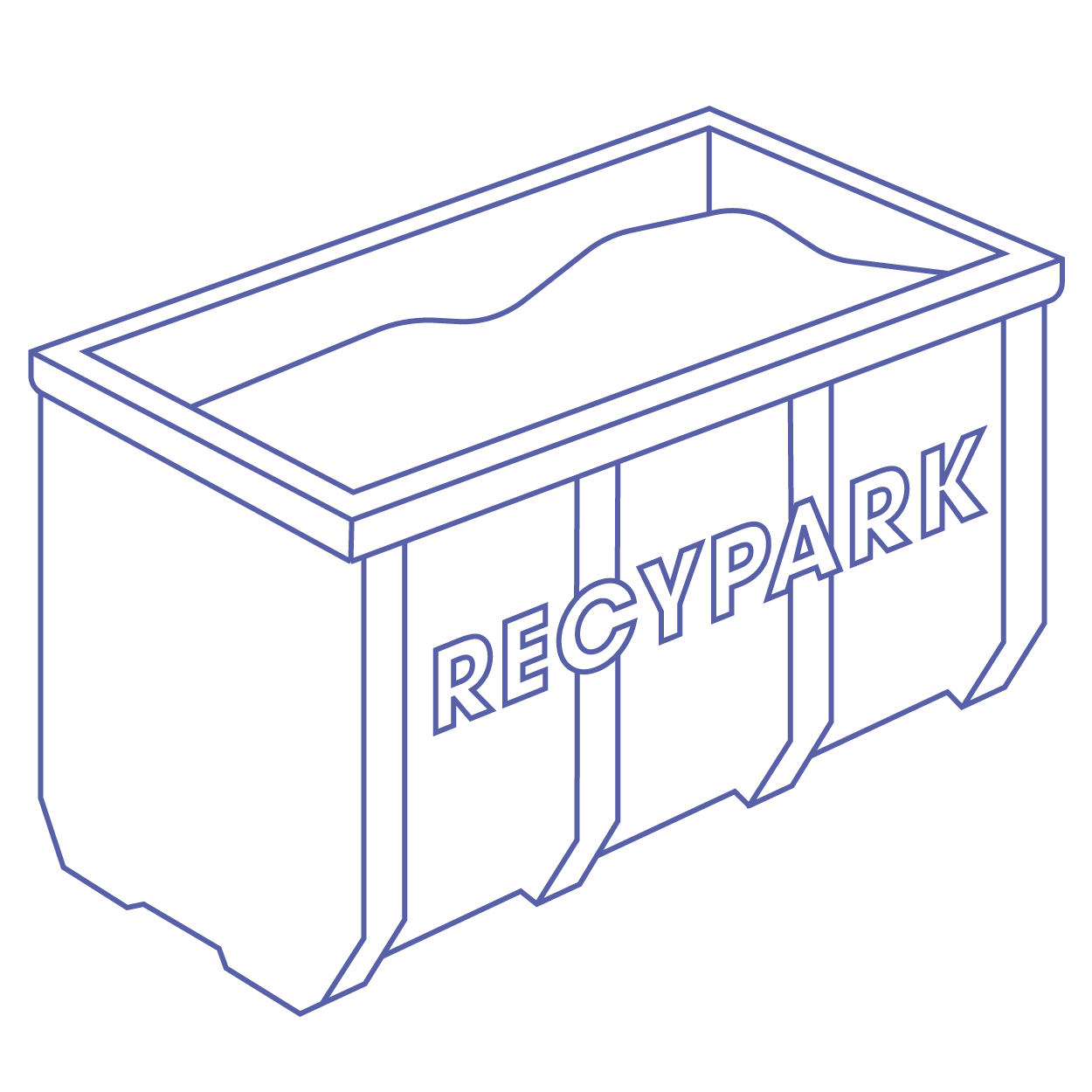
- At one of our Recypark for professionals - See rates, rules and practical information in this document or on the website’s Recypark page.
How?
How should you present your waste?
Some rules for “Construction, renovation and demolition waste”:
- For frames, doors, shutters and construction timber, plaster in bags (scraps, Gyproc type boards and ceilings), see “Sorted waste for which payment is required”.
- Roof covering materials (roofing felt / Derbigum) are refused at Recypark → See “Waste not accepted from professionals”.
- Loose “Bricks and brick fragments” waste is refused at Recypark. It must be in bags. For more information see “Sorted waste for which payment is required”.
- A maximum of twenty bags (20) may be brought to a Recypark.
- A maximum of twenty kilograms (20 kg) per bag measuring 50 x 80 cm.
We also encourage you to download our sorting memo and to fix where it can easily be seen.
Despite a much lower collection tonnage than other waste, Bruxelles-Propreté reserves a specific collection method for chemicals, with specially trained staff because of the danger they represent for the environment and for the people who handle them.
We also encourage you to download our sorting memo and to fix where it can easily be seen.
What?
What constitutes professional chemical waste?
Chemical and hazardous waste can be identified in particular by any of the symbols below displayed on its packaging: corrosive, irritant / harmful, hazardous to the environment, flammable, serious health hazard, toxic.





- long term

Waste authorized in the “Chemical and hazardous waste” category:

- Maintenance en cleaning products

- Gardening products

- Dyes, nail polish, perfumes

- Lighters

- Fire extinguishers

- Food / frying fat and oil (via Valorfrit)

- Batteries (via Bebat)

- Medical products, x-rays, thermometers
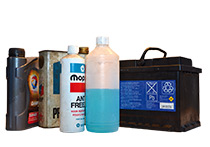
- Articles for cars

- Paints, varnishes and sealants;

- Printing products

- Bulbs separated by type, compact fluorescent lamps (‘energy-saving’), fluorescent tubes / neon lights and LED lamps (via Recupel).
Waste refused in the “Chemical and hazardous waste” category:
Potentially explosive products
Potentially radioactive products (including uranyl acetate)
Infectious products (clinical waste)
Potentially infectious products (probes, tubing, bags, etc.)
Bacteriological waste
Waste containing asbestos
Where?
Where should you put your waste?
You can dispose of your “Chemical and hazardous waste”:
Via our professional waste removal service: request a chemicals quotation.
- Send us your list of chemical waste items via pro@arp-gan.be or by fax to 02/780.28.38;
- We will send you a quotation for approval;
- A dispatch note will contain the description and quantities;
- We will fix an appointment for the collection of your waste;
- We will remove your chemical waste in a manner consistent with the safety standards specific to your type of waste.
How?
How should you present your waste?
Some rules for “Chemical and hazardous waste”:
- Professionals may not take their chemical and hazardous waste to ProxyChimik (accessible to citizens only) or to a Recypark → See “Waste not accepted from professionals”.
- Chemicals must be in their original, tightly closed packaging (not loose in a plastic bag). If there is no original packaging, write the name of the product clearly on the packaging.
- Also hand in the empty packaging of professional chemicals.
- Hand in energy-saving light bulbs, fluorescent tubes / neon lights and LED lamps in a plastic bag to keep them separate from other waste.
- Separate liquid materials from solid materials.
- Do not mix materials together.
- Hazardous waste must be presented in specific containers which are in good condition and easy to access and handle.
- Fluorescent tubes and x-rays must be presented for collection without their individual packaging. In all cases, waste presenting a specific hazard during handling (peroxides, cyanides, sodium, phosphorus, acids, alkalis, etc.) must be isolated from other chemical waste and clearly identified.
We also encourage you to download our sorting memo and to fix where it can easily be seen.
All medication, expired or not.
We also encourage you to download our sorting memo and to fix where it can easily be seen.
What?
What waste should be sorted in this category?
Waste authorized in the "Medicines and medical waste" category:
At your pharmacist:
- Bottles of medicine capsules
- Sprays
- Bottles of syrup
- Tubes of ointment
- Tablet strips
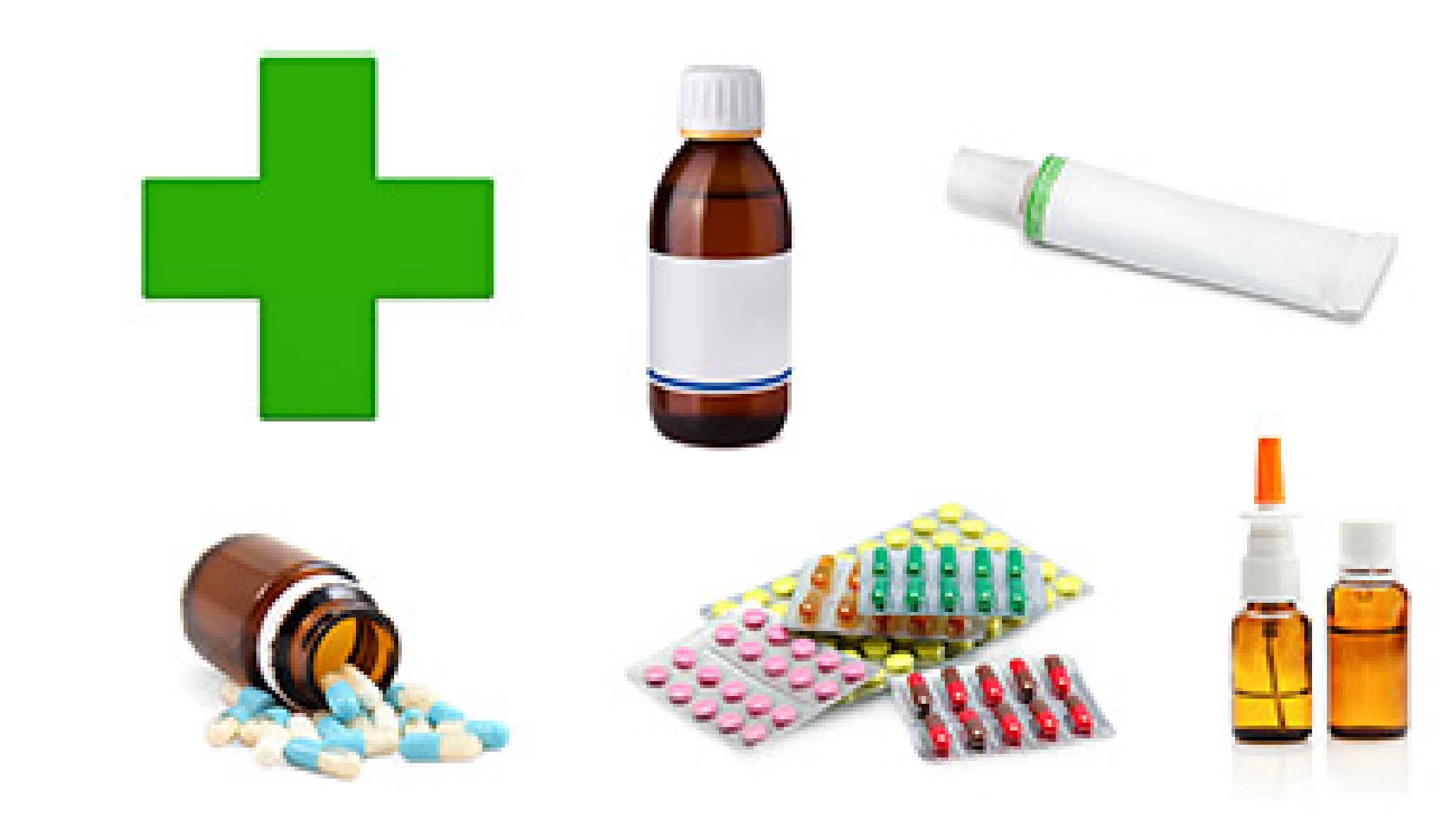
Subject to request for a chemicals quotation:
- Medicines and cosmetics
- Closed bottles of disinfectants and treatment products
- Chemical laboratory products (detailed list required)
- Syringes packaged in special rigid yellow containers (see image above) :
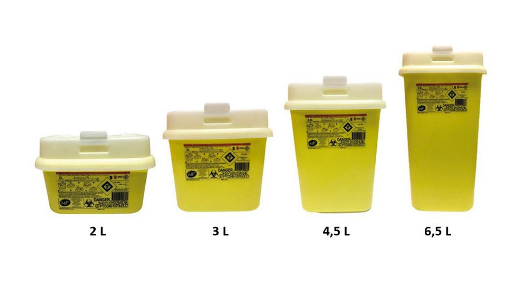
Waste refused in the "Medicines and medical waste" category:
- Potentially explosive products
- Potentially radioactive products
- Infectious products (clinical waste)
- Potentially infectious products (probes, tubing, bags, etc.)
- Bacteriological waste
- Other medical waste
Where?
Where should you put your waste?
You can dispose of your "Medicines and medical waste":
- At your pharmacist.
- Via our professional waste removal service: request a chemicals quotation.
- Send us your list of waste items via pro@arp-gan.be or by fax to 02/780.28.38.
- We will send you a quotation for approval.
- A dispatch note will contain the description and quantities.
- We will fix an appointment for the collection of your waste.
- We will remove your waste in a manner consistent with the safety standards specific to your type of waste.
How?
How should you present your waste?
Some rules for medicines and medical waste:
- Medicines, infectious laboratory products and clinical waste are refused in Recypark → See "Waste not accepted from professionals".
- Some medicines and medical waste items may be hazardous, so please also take account of the safety rules for "Hazardous waste".
- Put syringes in a special rigid yellow container available in pharmacies.
- Products should if possible be in their original packaging or in closed and labelled packaging (full or empty).
Other
Healthcare waste
Do For more information on health care waste management requirements, check the website of Bruxelles Environnement.
We also encourage you to download our sorting memo and to fix where it can easily be seen.
Today, there are no recycling channels for all types of waste, although new solutions are appearing regularly. Only place waste that cannot be recycled in your fuchsia bag or grey/black container. Sorting guarantees the valorisation of the waste as raw material. Do not throw any items in good condition.
We also encourage you to download our sorting memo and to fix where it can easily be seen.
What?
What waste should be sorted in this category?
Waste authorised in the ‘Residual waste’ category:
Residual waste originating from the normal activity of a business, i.e. residual waste that is similar in nature and composition to waste originating from households.
- Exclusively waste which does not have to be presented for selective collection under a legal or regulatory provision
- Wet, contaminated (fleas, etc.) or soiled textiles
- Incandescent bulbs
- Inner tubes
- Adhesive masking tape / sticky tape
- Halogen lamps
Waste refused in the ‘Residual waste’ category:
- Hazardous waste as defined in Article 3, 2° of the Ordinance of 14 June 2012 on hazardous waste (for more information, see ‘Chemical and hazardous waste’)
- Batteries
- Tyres
- Mineral and edible oils
- Food fats
- Waste electrical or electronic equipment
- Drugs
- Vehicle parts
- Mattresses
- Clean and dry textiles (including clothes with holes in them)
- Liquid waste from printing products
- Waste which presents an explosion or fire risk
- Animal carcasses or parts
- Waste from slaughterhouses and boning facilities, apart from food or kitchen waste and pet faeces
- Radioactive waste
- Waste containing asbestos (Eternit)
- Hydrocarbon-based waste (roofing)
- Construction, renovation and demolition waste
- Tree stumps / trunks
- Bulky items
- Non-combustible metal waste
- Food glass waste collected for the customer using glass containers whose capacity needs to be adapted in agreement with Bruxelles-Propreté Pro
- Waste that is accepted at a Recypark or in one of the ordinary selective collections
- Waste that can be taken by our professional waste removal service
Where?
Where should you put your waste?
You can dispose of your residual waste:
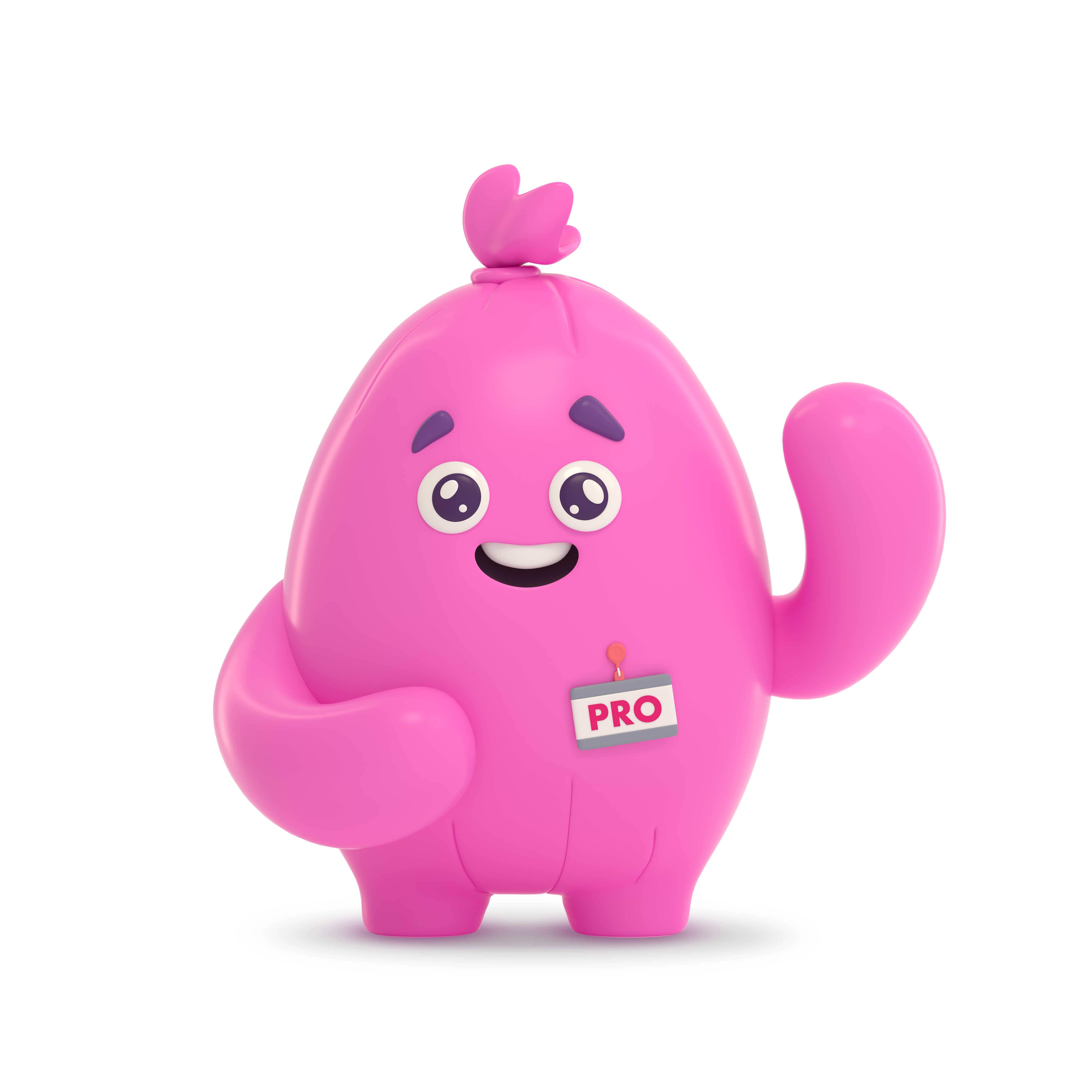
In the fuchsia commercial / pro bag - Only if you have a fuchsia bag commercial contract with us.
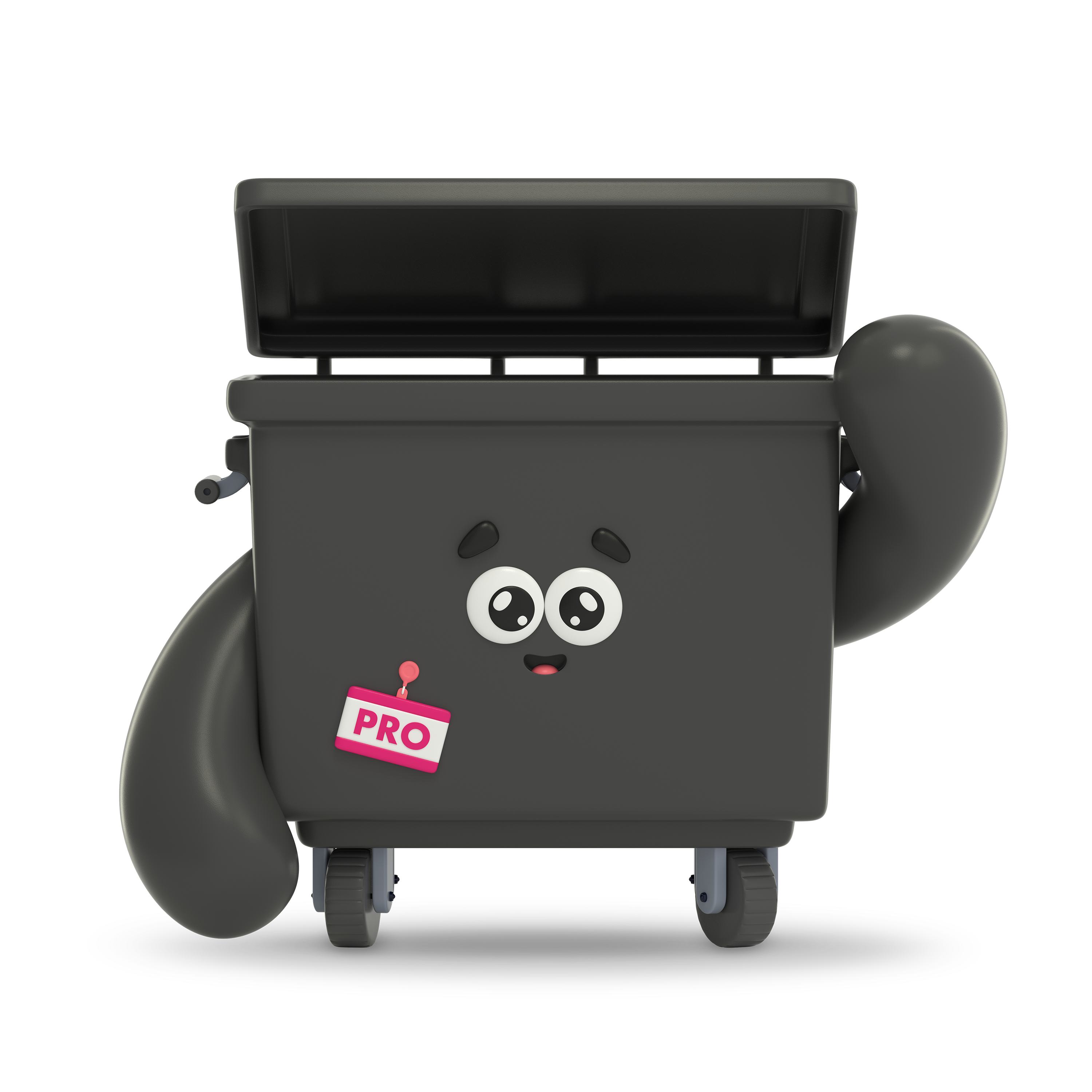
In the black container - Only if you have a black container commercial contract with us.
How?
How should you present your waste?
Some rules for residual waste:
- Residual waste is refused at Recypark → See "Waste not accepted from professionals".
- Hangers (product) purchased separately go into the "Residual Waste" fraction. On the other hand, hangers sold with (under)garments or from the pressings, whether made entirely of plastic or entirely of metal, are considered to be packaging components and are therefore accepted in the "PMC Packaging" fraction.
- For the collection of residual waste in bags, the use of bags other than the fuchsia commercial / PRO bag provided for this purpose is prohibited.
- You can put your loose residual waste in the black container. However, for reasons of hygiene and cleanliness, we recommend that you put your residual waste in a rubbish bag of your choice before it goes into the container.
- Please carefully wrap any sharp objects or packages to prevent injury to the employees of our Agency.
- Bags should be a maximum of fifteen kilograms (15 kg).
- To be accepted for collection, containers must be easy for our teams to handle. It is important to consider their weight and where to leave them. For example, a container that is too heavy, left on cobbles or gravel, or needs to be lifted off a curb may be impossible to collect, so pay attention to these details when preparing your containers for collection.
We also encourage you to download our sorting memo and to fix where it can easily be seen.
Find out where to put your Christmas tree after the festive season.
We also encourage you to download our sorting memo and to fix where it can easily be seen.
What?
What waste should be sorted in this category?
- Natural Christmas trees
- Non-electrified plastic artificial Christmas trees
- Electrified Christmas trees (the Christmas tree itself must be electrified, not just the garlands).
Where?
Where can you get rid of your Christmas tree?
You can dispose of your Christmas trees:
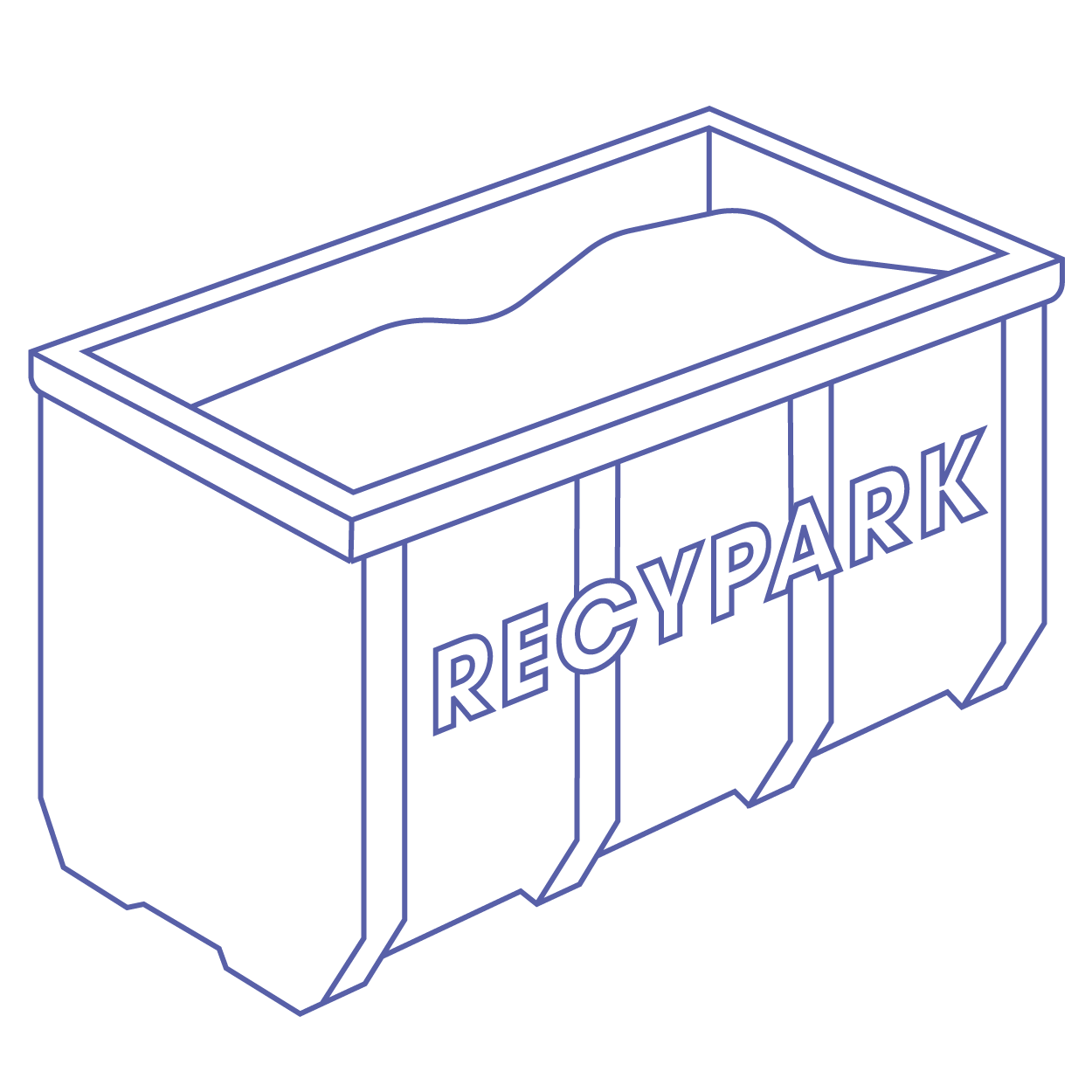
At one of our Recypark for professionals - See rates, rules and practical information on the Recypark page.
How?
How should you present your waste?
Some rules for Christmas trees:
- Remove the pot and all the decorations.
- You may leave the wooden stand.
We also encourage you to download our sorting memo and to fix where it can easily be seen.

